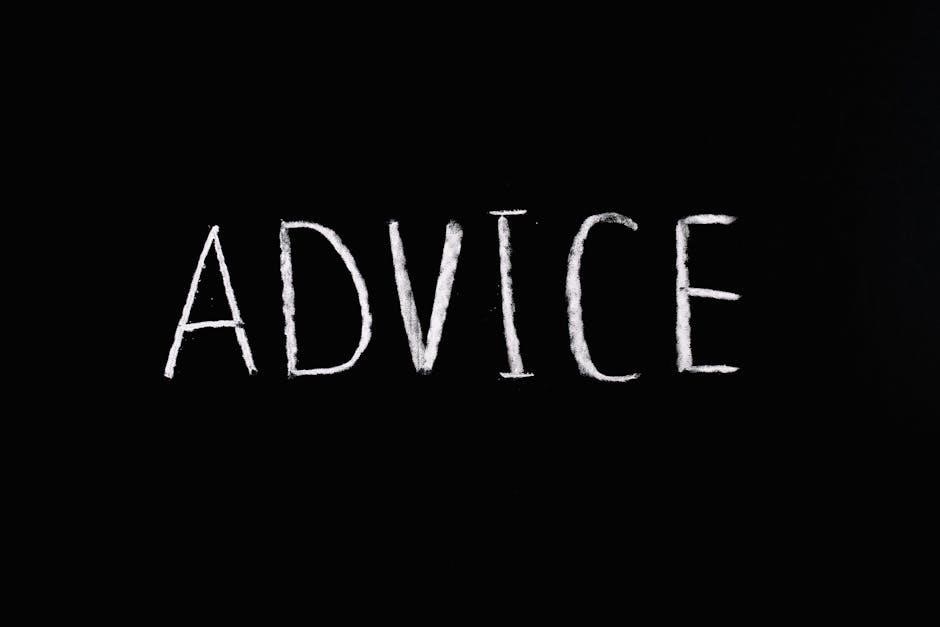Specially Designed Instruction (SDI) refers to tailored teaching methods for students with disabilities, ensuring their unique needs are met through individualized strategies and supports․
1․1 Definition and Purpose of SDI
Specially Designed Instruction (SDI) is tailored teaching tailored to meet the unique needs of students with disabilities․ It is a legal requirement under IDEA, ensuring individualized instruction to close academic gaps․ SDI focuses on specific skills or strategies, such as phonological awareness or behavioral supports, delivered in various settings․ Its purpose is to enable students to access the curriculum and achieve IEP goals, addressing their distinct learning requirements through targeted and adaptive methods․
1․2 Importance of SDI in Special Education
Specially Designed Instruction (SDI) is a legal requirement under IDEA, ensuring students with disabilities receive tailored support to meet their unique needs․ It addresses specific skill gaps, enabling progress toward IEP goals․ SDI is critical for promoting academic equity, as it customizes instruction to match individual learning requirements․ By focusing on targeted strategies, SDI helps close achievement gaps and fosters independence, making it central to special education’s mission of providing meaningful access to learning for all students․

Core Concepts of Specially Designed Instruction
Specially Designed Instruction (SDI) involves adapting content, methods, and delivery to meet unique student needs, utilizing strategies like explicit instruction and supplementary aids․
2․1 Legal Framework and Regulations
The legal foundation for Specially Designed Instruction (SDI) is rooted in the Individuals with Disabilities Education Act (IDEA) and its regulations․ IDEA mandates that special education services, including SDI, be provided at no cost to parents․ This ensures that students with disabilities receive tailored instruction to meet their unique needs, as outlined in their Individualized Education Programs (IEPs)․ Regulations specify that SDI must be explicitly designed and documented to address specific skill gaps and promote academic progress․ Compliance with these legal standards ensures equity and access to education․
2․2 Key Characteristics of SDI
Specially Designed Instruction (SDI) is characterized by its individualized nature, tailored to address the unique needs of students with disabilities․ It involves explicit teaching methods, such as direct instruction and systematic repetition, to ensure mastery of skills․ SDI is designed to close the performance gap between students with disabilities and their peers․ It is documented in the IEP and must be distinct from general education practices, focusing on specific skill development․ Examples include phonological awareness training and small-group instruction for targeted support․

Types of Specially Designed Instruction
SDI includes academic, behavioral, and physical instruction tailored to meet individual needs․ Examples range from phonological awareness training to adaptive physical education, ensuring diverse support․
3․1 Academic Instruction Examples
Academic SDI includes targeted strategies like phonological awareness training, explicit vocabulary instruction, and systematic math interventions․ For example, students with reading difficulties may receive small-group instruction focusing on decoding and comprehension․ Graphic organizers and manipulatives are also used to support learning․ These methods are often paired with Universal Design for Learning (UDL) principles to ensure accessibility and engagement for all learners․ By tailoring instruction to specific academic needs, SDI helps bridge gaps and promote mastery of IEP goals․
3․2 Behavioral and Emotional Support Strategies
Behavioral and emotional SDI strategies focus on teaching students to manage emotions and develop positive behaviors․ Examples include positive behavioral interventions, social skills training, and emotional regulation techniques․ Teachers may use visual schedules, behavior contracts, or mindfulness exercises to support self-control․ These strategies are often integrated into IEPs to address specific emotional or behavioral challenges, ensuring students can access academic content and participate fully in educational settings․
3․3 Physical and Adaptive Instruction Methods
Physical and adaptive SDI methods cater to students with physical or motor challenges, enabling them to access education effectively․ Examples include adaptive equipment, such as specialized chairs or assistive technology like communication devices․ Techniques like physical therapy embedded into lessons or using tactile aids for sensory integration are common․ These methods ensure students with physical disabilities can participate actively and achieve their educational goals, fostering independence and inclusion in educational settings․

Differentiating SDI from Core Instruction
Specially Designed Instruction (SDI) differs from core instruction by being tailored to meet individual student needs, often outlined in an IEP, while core instruction addresses general curriculum requirements․
4․1 Comparing SDI to General Education Practices
General education practices are designed for all students, focusing on standard curriculum delivery․ In contrast, SDI is tailored to meet the unique needs of students with disabilities, often requiring specialized strategies, accommodations, and supports․ While general education aims for broad accessibility, SDI provides individualized instruction, such as small-group or one-on-one teaching, and incorporates supplementary aids like assistive technology or behavioral interventions to ensure student progress toward IEP goals․ This distinction ensures equity and access for students with diverse learning requirements․
4․2 Unique Aspects of SDI in IEP Development
SDI is a critical component of IEP development, ensuring personalized learning strategies for students with disabilities․ Unlike general education, SDI requires explicit goals, tailored methods, and measurable outcomes․ It involves collaboration between educators and parents to design instruction that addresses specific needs, such as phonological awareness or behavioral support․ SDI is documented in the IEP to ensure accountability and progress monitoring, distinguishing it from general education practices that serve all students without individualized plans․ This uniqueness guarantees targeted support for each student’s growth․

The IEP Process and SDI
The IEP process ensures SDI is tailored to meet individual student needs, outlining specific goals, accommodations, and services to support academic and functional growth effectively․
5․1 Identifying the Need for SDI
Identifying the need for SDI involves evaluating a student’s unique challenges and determining if specialized instruction is required to meet their academic or functional goals․ This process typically begins with assessments and data analysis to pinpoint specific areas of difficulty․ The IEP team then collaborates to decide if SDI is necessary, ensuring the student receives targeted support tailored to their needs․
5․2 Developing Annual Goals and Objectives
Annual goals and objectives are specific, measurable outcomes developed for students receiving SDI․ These goals address the student’s unique needs and are aligned with their IEP․ Educators collaborate to create SMART (Specific, Measurable, Achievable, Relevant, Time-bound) goals, ensuring clarity and focus․ For example, a goal might target phonological awareness or self-feeding skills․ Progress toward these goals is regularly monitored and reported, ensuring the student receives effective support tailored to their development․

Implementing SDI in Educational Settings
SDI is implemented through tailored strategies, ensuring students with disabilities access learning․ Explicit instruction, small-group settings, and technology integration are common methods, fostering an inclusive educational environment․
6․1 Strategies for Delivering SDI in Classrooms
Effective SDI delivery involves explicit instruction, small-group settings, and universal design for learning․ Graphic organizers, manipulatives, and assistive technology enhance accessibility․ Teachers adapt content, methodology, and delivery to meet individual needs․ Collaboration between general and special educators ensures coherent support․ Progress monitoring and data-driven adjustments are crucial․ These strategies create an inclusive environment, helping students achieve their IEP goals․
6․2 Role of Teachers and Support Staff
Teachers and support staff play a vital role in delivering SDI․ General and special educators collaborate to co-plan, co-deliver, and co-assess instruction, ensuring consistency․ Support staff, such as paraprofessionals, assist in implementing SDI, particularly in inclusive classrooms․ Their roles include aiding small-group instruction, managing materials, and supporting assistive technologies․ Effective collaboration ensures students receive tailored support, aligning with IEP goals․ Monitoring progress and adjusting instruction are shared responsibilities, fostering a cohesive educational environment․

Examples and Case Studies of SDI
Examples of SDI include direct instruction in phonological awareness, explicit vocabulary teaching, and behavioral support strategies․ Case studies demonstrate tailored interventions addressing specific academic, physical, and emotional needs․
7․1 Academic Support Examples
Academic support examples of SDI include direct instruction in phonological awareness, explicit teaching of reading comprehension strategies, and systematic math interventions․ These methods are tailored to address specific learning gaps․ For instance, graphic organizers and manipulatives are used to enhance understanding and engagement․ Small-group instruction and technology-based interventions are also common․ These strategies are designed to close the academic gap and ensure students meet IEP goals․ They are often delivered in small settings or through virtual platforms, ensuring accessibility and personalized learning opportunities․
7․2 Behavioral and Emotional Support Case Studies
Behavioral and emotional support examples of SDI include strategies like positive reinforcement, visual schedules, and social skills training․ For instance, a student with emotional challenges might receive small-group instruction on self-regulation techniques․ Case studies highlight how SDI helps students manage behaviors, such as using functional behavioral assessments to develop targeted interventions․ These supports are tailored to address specific emotional needs, ensuring students can access learning environments successfully․

Challenges and Considerations in SDI
Implementing SDI requires careful planning, addressing legal requirements, and ensuring access to resources․ Challenges include balancing individual needs with classroom demands and maintaining consistency in delivery․
8․1 Common Challenges in Implementing SDI
One common challenge in implementing SDI is the need for specialized training and resources․ Teachers must often adapt general education materials to meet individual student needs, which can be time-consuming․ Additionally, ensuring consistency in delivery across different settings, such as virtual or home environments, can be difficult․ Another challenge is balancing the individualized nature of SDI with the demands of a traditional classroom, requiring creative and flexible teaching strategies․ Furthermore, staying updated on legal requirements and best practices adds to the complexity of effective SDI implementation․
8․2 Addressing Diverse Student Needs
Addressing diverse student needs requires tailored approaches in SDI․ For example, students with physical disabilities may benefit from adaptive equipment or modified environments, while those with emotional challenges might need behavioral support strategies․ Academic diversity can be met through differentiated instruction, such as graphic organizers or assistive technology․ Additionally, incorporating Universal Design for Learning (UDL) principles ensures accessibility for all learners․ These strategies help teachers create inclusive environments that cater to the unique requirements of each student, fostering equitable learning opportunities․

Technology and SDI
Technology plays a key role in SDI, with tools like assistive devices, online platforms, and adapted text enhancing accessibility․ These resources support diverse learning needs effectively․
9․1 Assistive Technology in SDI
Assistive technology (AT) is a key component of SDI, providing tools to support students with disabilities․ Examples include text-to-speech software, speech-to-text devices, and adaptive keyboards․ These technologies help students with visual, auditory, or physical challenges access curriculum materials․ AT can also include mobility aids like motorized wheelchairs or communication devices for non-verbal students․ By integrating AT into SDI, educators ensure equitable learning opportunities, enabling students to achieve their IEP goals independently and effectively․
9․2 Digital Resources for SDI Delivery
Digital resources play a crucial role in delivering SDI, offering flexible and accessible tools for diverse learning needs․ Examples include online platforms with adapted texts, graphic organizers, and multimedia content․ Universal Design for Learning (UDL) strategies, such as interactive simulations and virtual labs, also enhance engagement․ These resources enable personalized instruction, catering to individual learning styles and abilities, and are often integrated into IEPs to support academic and functional goals․

Best Practices for Effective SDI
Effective SDI requires collaboration, continuous monitoring, and data-driven adjustments․ Teachers should co-plan with special educators, use explicit instruction, and integrate UDL principles to ensure student progress and engagement․
10․1 Collaboration Between General and Special Educators
Collaboration between general and special educators is crucial for effective SDI․ Co-planning lessons, sharing strategies, and aligning goals ensure a cohesive approach․ General educators provide content expertise, while special educators offer tailored support, creating a unified team․ This partnership fosters an inclusive environment, enabling students with disabilities to access curriculum alongside peers․ Regular communication and joint evaluations enhance instructional delivery, promoting student progress and achievement of IEP goals effectively․
10․2 Monitoring Progress and Adjusting Instruction
Monitoring student progress is essential to ensure SDI effectiveness․ Regular assessments and data analysis help identify areas needing adjustment․ Teachers use this information to modify instructional strategies, ensuring alignment with IEP goals․ Collaborative review with support staff enables timely adjustments, addressing emerging needs․ This iterative process ensures personalized instruction remains relevant and impactful, fostering continuous student growth and achievement of desired outcomes․
Future Directions in SDI
Future directions in SDI include integrating technology, personalized learning, and Universal Design for Learning (UDL)․ Expanding access to resources and innovative strategies will enhance student outcomes․
11․1 Innovations in Instructional Strategies
Future innovations in SDI include adopting Universal Design for Learning (UDL) frameworks, integrating technology tools like graphic organizers, and leveraging co-planning between general and special educators․ Personalized learning platforms and data-driven instruction will enable real-time adaptations to meet student needs․ These strategies aim to enhance accessibility, engagement, and individualized support, ensuring students with disabilities achieve their full potential in diverse educational settings․
11․2 Expanding Access to SDI Resources
Expanding access to SDI resources involves increasing availability of digital tools, training programs, and collaborative platforms for educators․ Schools can utilize online repositories for instructional strategies, such as PDF guides and checklists, to support teachers․ Professional learning networks and state-level initiatives can further distribute these resources, ensuring equitable access․ By integrating SDI resources into IEP development and classroom practices, educators can better serve diverse student needs, fostering inclusive and effective learning environments․

